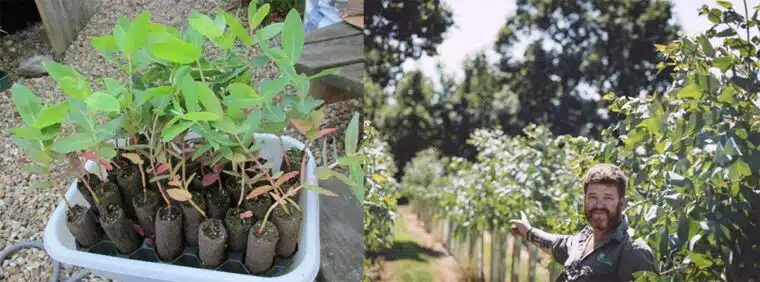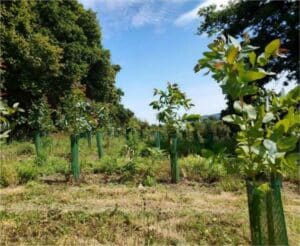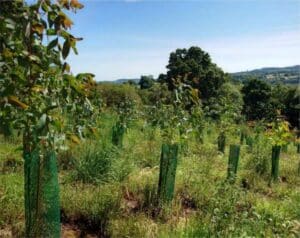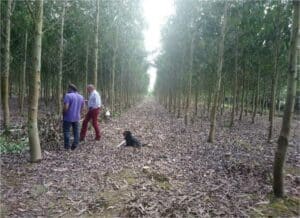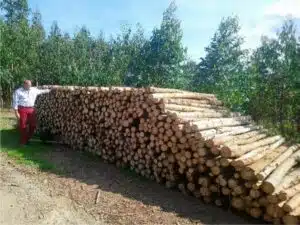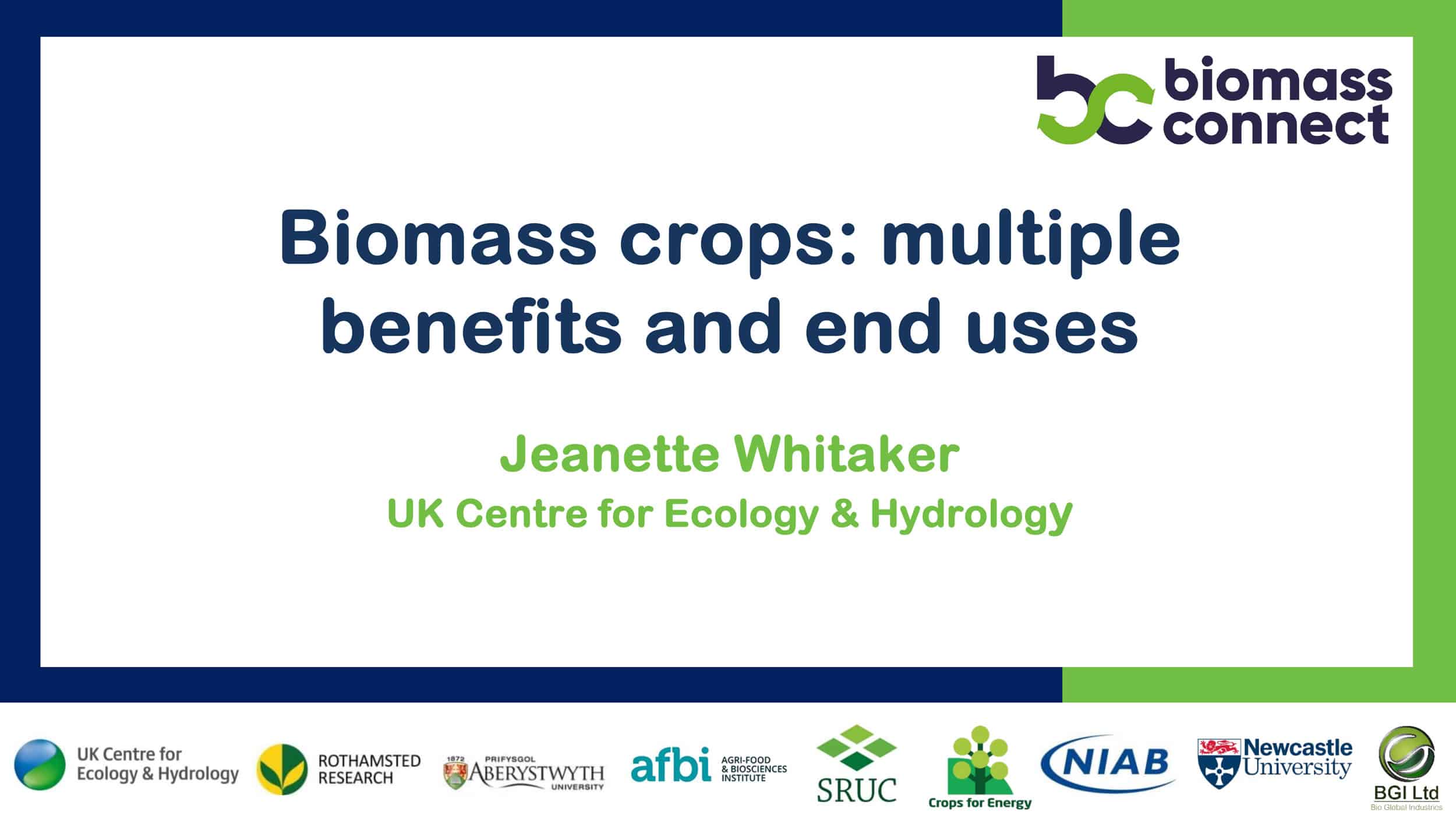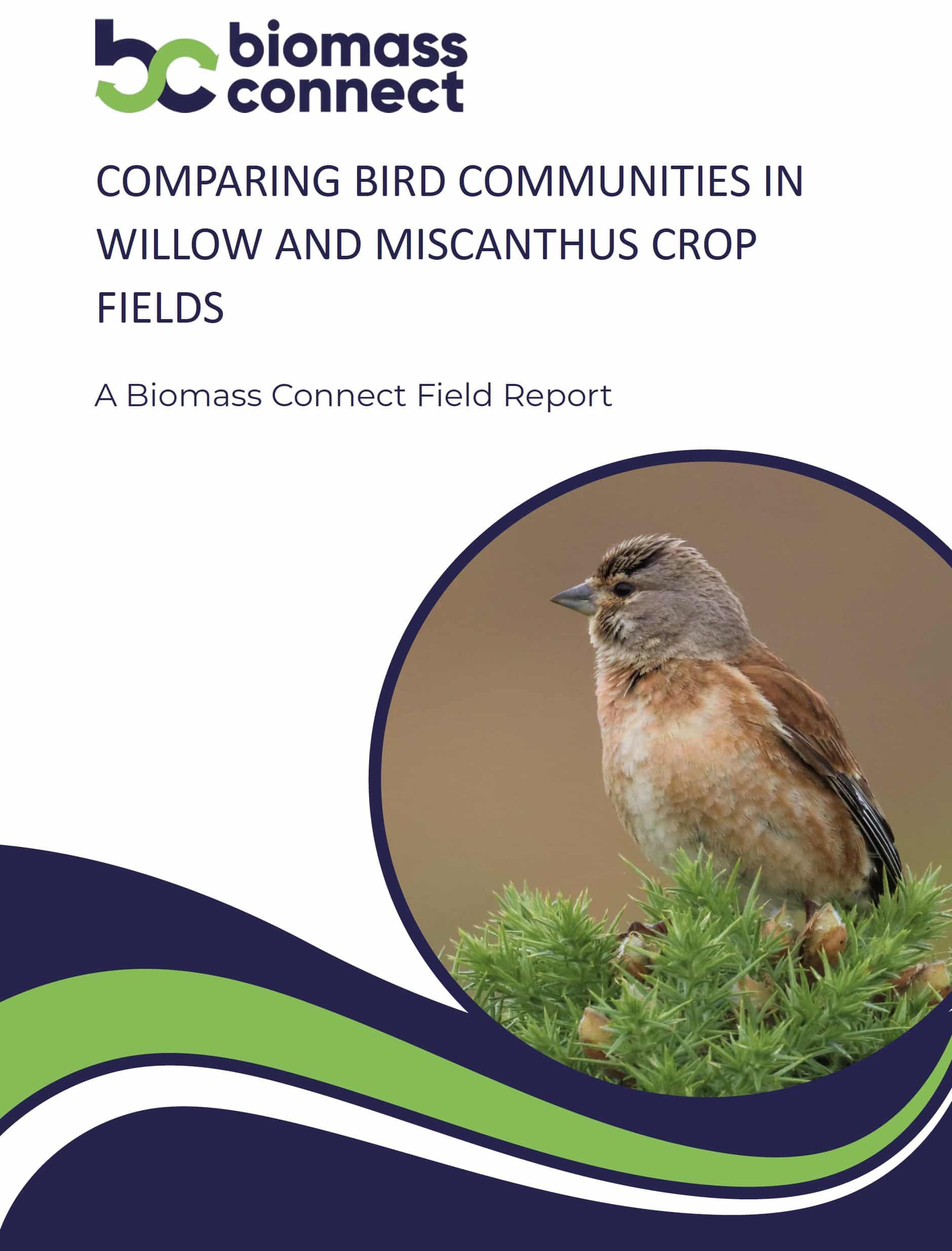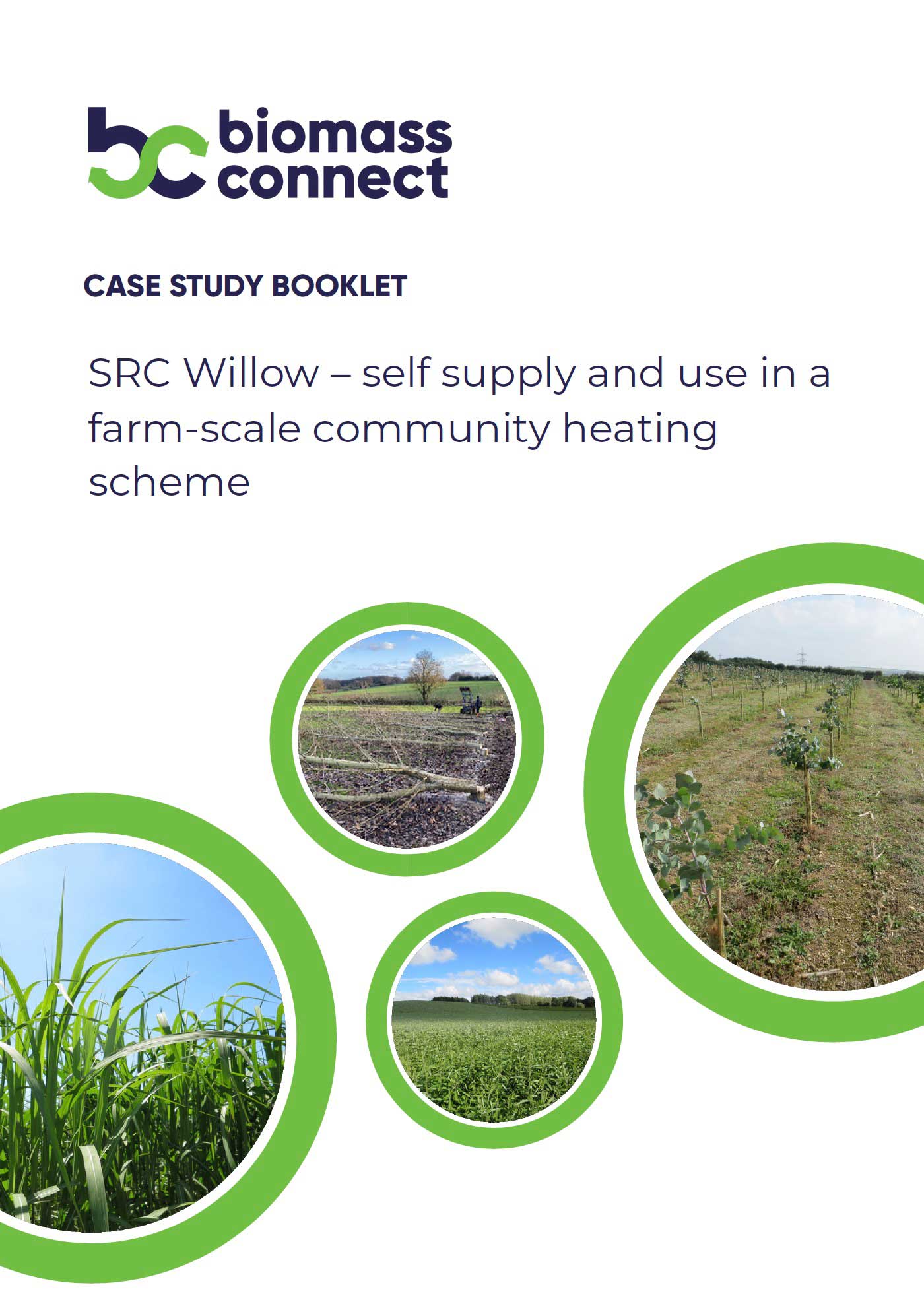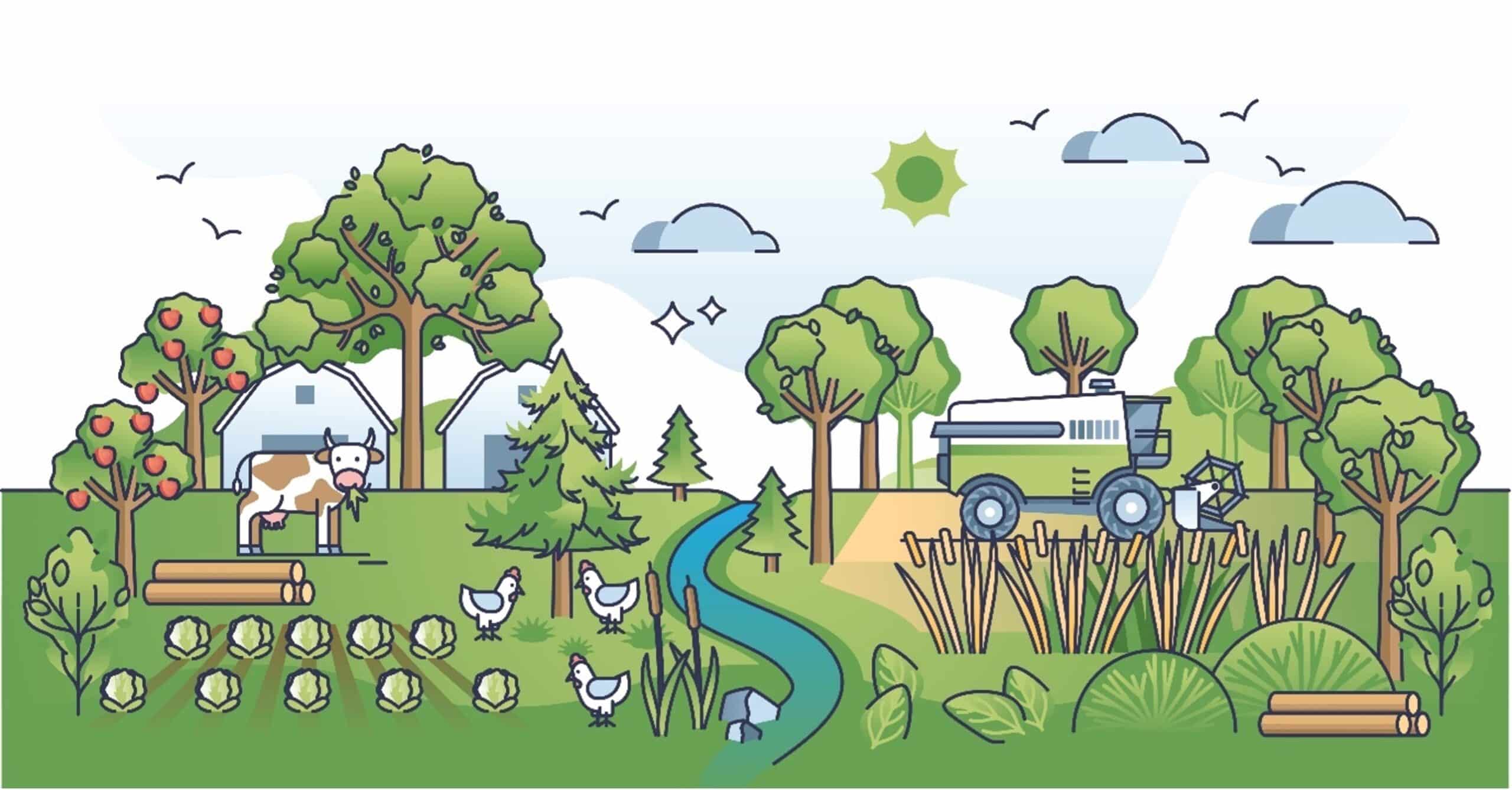Eucalyptus as a Biomass Crop
Key messages:
- Eucalyptus species display rapid growth characteristics, high water and nutrient-use efficiency, and have been identified as having great potential for use in short rotation forestry (SRF) or coppice (SRC) in the UK.
- Low temperatures and unseasonal temperature fluxes are the main limiting factor to Eucalyptus growth.
- Eucalyptus species and provenance must be selected and matched appropriately on a site-by-site basis.
Introduction
The Eucalyptus genus is native to Australia where species have adapted to grow under a wide range of climates and challenging environmental conditions. A number of Eucalyptus species have been identified as having great potential as a short rotation forestry (SRF) or coppice (SRC) species in the UK. Eucalyptus is suited to short rotation forestry due to its fast growth rate and high biomass yield, which can exceed that of other native species. When planted in favourable locations growth rate can be 2 – 3 m per year and can be harvested from 4-6 years onward. Based on an 8-10 year rotation, data from early UK trials identified yields in the range of 20-30 m3 ha/yr, on a bark-free basis, equivalent to 10-15 oven dry tonnes per hectare per year. Yields of up to 48 m3 ha/yr have been reported from a commercial plantation in Cornwall. Eucalyptus produces a high-density wood, with a net calorific value of 18 GJ t, which seasons quickly and is suitable for use as a biomass fuel or timber product.
Site Suitability
Low temperatures and unseasonal temperature fluxes are the main limiting factor to Eucalyptus growth. Frost damage can be a problem during establishment, but risk can be mitigated by proper species selection and silvicultural management.
In general, there is an inverse relationship between frost hardiness and growth rate. E. nitens, for example, displays exceptionally fast growth rate but is more susceptible to frost, this restricts its growth-range to southern Britain. Species such as E. glaucescens and E. gunnii are more cold- tolerant. Mountain-type E. coccifera and E. urnigera have been shown to perform well in exposed conditions and have been established successfully as far north as Moray in Scotland. Other species such as E. rodwayi are swamp varieties which are suited to wetter regions and ground conditions.
| Species | Growth rate | Frost hardiness |
| E. nitens | **** | * |
| E. denticulata | **** | ** |
| E. globulus ssp. Bicostata | **** | * |
| E. glaucescens | *** | *** |
| E. johnstonii | *** | ** |
| E. delegatensis | *** | * |
| E. regnans | *** | * |
| E. gunnii | ** | *** |
| E. coccifera | ** | ** |
| E. dalrympleana | ** | ** |
| E. urnigera | ** | ** |
| E. rodwayi | ** | ** |
A table listing some of the main species suitable for use in the UK, including indications of growth rate and frost hardiness is included below; adapted from a review of Eucalyptus in the British Isles.
Eucalyptus species and provenance must be selected and matched appropriately on a site-by site basis. Factors of water availability, elevation, likelihood of unseasonal frosts, soil type and light levels must all be considered.
Establishment
Ground can be prepared via traditional cultivation or planting using a no-till approach. Physical or chemical weed suppression is required post-planting. Alternatively, planting can also be performed through a geotextile membrane to suppress weeds.
Planting is performed from seedlings at stocking densities of between 1,600-2,500 stems per hectare at (2.5 x 2.5m – 2.0 x 2.0 m spacing). 2-3 ha is considered the minimum area for viable commercial production. Tree-shelters and stakes are generally required to protect young plants and support early growth. Due to rapid growth rates, close monitoring is essential for the first few years until trees successfully establish.
- E. dalrympleana, Devon, aged 14 months.
- E. denticulate, Devon, Aged 14 months.
The primary objective is to achieve canopy closure as soon as possible and create a suitable microclimate for trees to thrive. Mixed species stands, or planting with other tree species in shelterbelts, can improve resilience and offset risk. For example, more cold tolerant species can be included on exposed stand edges. Mixed-age stands can also reduce risk from frost damage and exposure by providing shelter for younger trees by providing a positive microclimate and protected environment. Staggered planting and harvesting can be performed to provide continuous self-supply or be adapted to suit farmland available to fit around core farm business and provide other benefits.
Eucalyptus light canopy can afford options for growth in the understory. This means stands are well suited to agroforestry use (silvo-arable/pastural) as well as in shelterbelts, riparian buffer strips and sight screens.
Management, pests and diseases
Leaf loss is a common sign of stress in Eucalyptus trees and should be watched out for. Few pests are currently prevalent in UK. Psyllids are a common infestation on establishing trees but generally have minimal impact. The leaf beetle, Paropsisterna selmani has posed problems in Ireland and eucalyptus gall wasp (Ophelimus maskelli) could pose a threat in the UK. Eucalypts have displayed good resistance to Phytophthora and other foliar pathogens. Young growth can be palatable to deer but the oils in the foliage deter extensive browsing of the foliage. Fencing may be required in areas where these animals are prevalent.
Harvesting
Harvesting is performed using conventional forestry methods. First thinning can be done from year 4-6. At higher stocking densities, and under suitable growing conditions, around 16 t ha can be expected at 1st thinning. Commercial data suggests an annual sustainable yield of around 40m3 ha yr can be achieved, producing consistent roundwood for chipping or firewood use from year 4-5 onward.
- Four-year-old E. nitens stand grown in Cornwall. Trees were 12m in height, 12cm average diameter (dbh)
- Logs produced from first thinning (year 4)
Coppicing – most Eucalypts will coppice well and their capability to do so also mitigates risk if damage to the main stem occurs due to frost or browsing. Coppicing can be performed from years 2–7 and stools will remain productive for 3-4 rotations of 4-8 years, after which the stool viability will drop.
If chipping wood: harvest time, storage conditions and moisture content of the chip needs careful consideration. Higher moisture content can lead to increased fungal growth (composting) in chip stack and under some conditions can also present a fire risk which needs to be accounted for in management of the chip.
Eucalyptus wood can retain higher concentrations of chlorine in the biomass which can cause corrosion in boiler systems if significant quantities are burned. However, this risk can be offset by biomass mixing or pre-treatment. There is also evidence chlorine content decreases with stand age.
Additional uses and benefits
- Eucalyptus foliage is widely used in floristry.
- Eucalyptus attracts pollinators.
- Eucalyptus honey production
- Volatile oils from foliage have potential for multiple applications in nutraceutical and pharmaceutical products such as antiseptic and anti-inflammatory products.
Summary of promising Eucalyptus species for SRF in the UK
|
|
|
|
Further information:
Forestry Commission – Grant funding for woodland
Forest Research – Wood fuel supply guidance
This article was produced in collaboration with Brian Elliott of Eucalyptus Renewables Ltd.
Watch Bryan Elliott’s Biomass connect webinar: Eucalyptus as a short-rotation forestry crop for the UK
